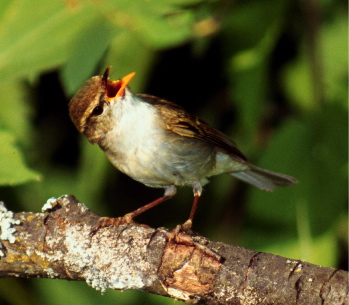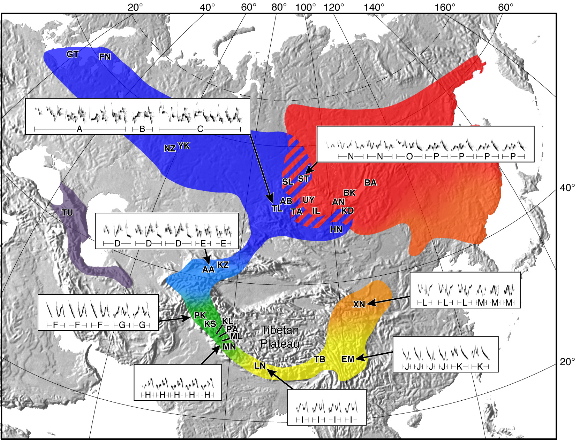I had a chance to go to this wonderful event and there were numerous problems with this man's presentation. One of the main topics of the lecture was to promote creation science teaching in schools as an alternative scientific approach to evolution, as opposed to a religious pursuit. The supposed basis for this field is that it is based on the observation of things in the universe that are apparently designed and must have a creator. I find his examples to be preposterous and I believe I can list quite a number of ordered things that occur in nature, and that are not created by people in our world or by any intelligence that is known. He amusingly used the bacterial flagellum as a proof for his point. This is something that appears to have been created and is de facto, created by intelligence. Not by random chance, and although he didn't use the really cool phrase 'irreducible complexity,' (and for the anonymous person who claims text cannot express implied tone - I am being sarcastic) he alluded to the flagella working with its complex 30 working parts and would not be able to do so without them but he is most likely referring to the eubacterial flagella that was mentioned by William Dembski and Michael Behe. There are numerous examples in eubacteria and archebacteria that function in motility and work by very different mechanisms, without the 30 parts, that he would claim are required for the proper function of that complex machine (the flagella is NOT a machine, his definition of a machine is from a human perspective and does not entirely apply to the flagella, which by the way does not only function in motility!). Also, numerous studies have actually produced bacteria with flagella that have been significantly pruned but still function properly in motility, along with the other numerous functions that were not mentioned.
But... I digress, I was a little distracted by the 'evidence.' Why is it not okay to allow this guy into our colleges, into our high schools? Is this truly a scientific alternative to the teaching of evolution that does not have to do with evolution? No! It is not!
The very idea of creation - is a religious idea. He did not say outright if he thought the world was 10,000 years old or not but he did put it on a slide, so I can guess he disagrees with the age of the world/universe according to natural science. That specific age of the world/universe is a Christian concept. But, since he very carefully did not say what his belief was (at any point in the lecture), I cannot rightfully say that I KNOW that he believes this, even though, I think it is likely. What I can say however, is that the theory there is a creator, is a religious perspective. He even mentioned 'Adam' being the first man (a Christian idea!).
There were numerous problems with his proposing this 'creation science' be taught in schools. Ignoring that for a little bit, let's proceed onto other topics that were discussed.
There were quite a few scientists that were quoted out of context. Including, one of my favorites - Richard Dawkins - on many occasions. He quoted the first page of Richard Dawkin's book, The Blind Watchmaker, that says:
Biology is the study of complicated things that give the appearance for having been designed for a purpose.
Not only does he fail to mention the subtitle of this book, "Why the Evidence of Evolution Reveals a Universe Without Design" he provides this quote as if biologists might have some doubt that evolutionists like Dawkins' may even have doubt themselves that evolution can explain the whole picture. Nor does he finish explaining what was on the rest of the page in Dawkins’ book! He also quotes Richard Dawkins' during an interview with Bill O’Reilly, here Dawkin’s says that evolutionary biologists can observe evolution, and in order to secure a point, Dawkins’ says that large changes in evolution are like coming upon a murder scene with blood, fingerprints, etc. Bill O’Reilly believed he proved Dawkins’ and evolutionary biologists alike – are morons when he says, “But did you see the murder?” Did Dawkins, Mayr, Darwin, or anyone else see the transitional species like Tiktaalik Roseae, Dinosaurs, Neanderthals, etc? NO! No biologist said that he has seen these organisms alive, or that we have seen the life history of the planet in its entirety. Although, I could deal with this terrible logic more, it is irrelevant because I must mention, why was he talking about this?
Don Patton, PhD (Education), was saying that using the strict definition of the scientific method, we cannot study evolution, we cannot study creation science. But according to him if we use ‘science,’ we can! Whaaaat? To do science we use the scientific method! We have conducted experiments on evolution (change in allele frequencies in a population) and we’ve witnessed the results. He claims to refute this point by discussing his term horizontal variation, that quantitative trait differences, like beak depth (which he mentioned) always exist in a spectrum with averages and shift around, but they’ll always exist, and if for some reason some variable trait is no longer present, populations can revert back to these traits. No traits appear or disappear. He also mentions that evolution is the building up of information, and thinks that evolution says that new traits simply appear.
Once again, what is his example for the appearance of traits that supposedly confirm evolution according to biologists? Antibiotic resistance!! And I’m so glad he discussed this. He goes on to say, genes for antibiotic resistance didn’t simply appear in populations and that they are always present at some percentage in a population (he shows a picture that has 20% of individuals in the image are resistant to antibiotics). Once antibiotics are applied to this population, now 80% of the individuals die, and the remaining members (now 100%) of the population are resistant to antibiotics. He thinks this is a proof because this was a trait that was present all along, and that all of us biologists are morons for stating antibiotic resistance appeared, which he uses synonymously with evolved. Which is an incorrect usage of the word, AND no biologist would say that.
Why is this actually a proof FOR evolution? As we should know from our class, evolution is a change in allele frequency over time. Over the time where antibiotics are applied to this population, the bacteria who are resistant, survive and the gene for antibiotic resistance goes from an allele frequency of perhaps 0.2 to 1. This IS evolution!!! He said that this is an example of ‘horizontal variation’ but his definition for horizontal variation says that there is a trait in a population that varies (i.e. antibiotic resistance, antibiotic susceptibility). How can antibiotic resistance vary in this population when 100% of the individuals possess the gene for antibiotic resistance?! I actually asked this question to Don Patton and his reply to me was:
Well… ha ha.. when you use strict definitions like that, then yes that makes sense to the mind of a biologist.
What?! I used his definition of horizontal variation!!!!! Also, that is an example of a loss of information!!! Evolution does not suggest there will be a gain of information in population over time. If he did possess any information or knowledge regarding the genetic aspect of the Modern Synthesis, he might’ve had more interesting arguments, he might have been able to discuss that perhaps the bacteria in his example were heterozygous for this gene of resistance, and some of the population will horizontally vary back to susceptible, but he did no such thing, and it would be easy to eviscerate that line or thinking (since that would be a change in allele frequency!!!). Oh I forgot to mention, he thinks a lot of evolution education is a conspiracy amongst scientists and the media. An example of what he believes – regarding this statement – is that Darwin plagiarized most of his work.
Although, I was rightfully upset by the time I left that room, I was comfortable knowing this logic was rather pathetic and fails to carry any weight. I can only think of what Dr. Muller said the next morning after the lecture (which I hope she does not mind me quoting) If this is the best that they can bring on, I am not too worried. I could not agree more.











 I am assuming the reason behind them using blind individuals as their subjects is to control for the expressions that could have been developed in an individual by learning from people around them, over time. They have also removed the factors in the study that could account for false results. For example, they made sure that the blind subjects did not learn these expressions by touching the face of their relatives. They also made sure that the subjects with normal vision did not imitate the blind subjects.
I am assuming the reason behind them using blind individuals as their subjects is to control for the expressions that could have been developed in an individual by learning from people around them, over time. They have also removed the factors in the study that could account for false results. For example, they made sure that the blind subjects did not learn these expressions by touching the face of their relatives. They also made sure that the subjects with normal vision did not imitate the blind subjects.  This is a well written and studied article. This article was about the evolutionary divergence of the Siberian green warbler. The evidence they gather for their thesis is overwhelmingly convincing and they seemed to cover all questions that may come up. They believed and tested that the divergence of song may be the main cause of speciation. This is a highly feasible theory because if you can’t understand someone it is hard to breed with them. (Continues below...)
This is a well written and studied article. This article was about the evolutionary divergence of the Siberian green warbler. The evidence they gather for their thesis is overwhelmingly convincing and they seemed to cover all questions that may come up. They believed and tested that the divergence of song may be the main cause of speciation. This is a highly feasible theory because if you can’t understand someone it is hard to breed with them. (Continues below...)










